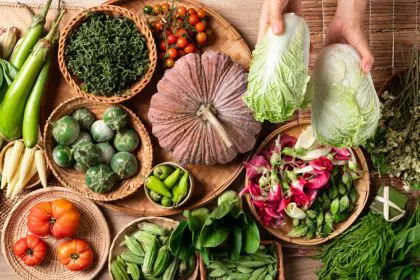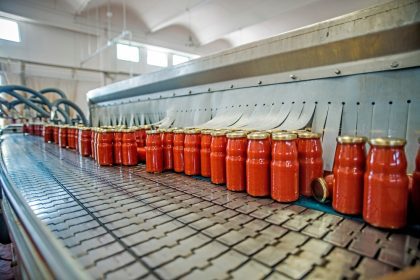Something fascinating is happening in kitchens around the world. While everyone was busy perfecting their sourdough starters during quarantine, a much bigger food revolution was quietly brewing. People are ditching their microwaves and rediscovering cooking techniques that their great-grandmothers knew by heart but somehow got lost in our rush toward convenience food.
This isn’t just nostalgia or hipster posturing. We’re witnessing a genuine renaissance of traditional food practices that offer something our modern food system simply cannot deliver – deeper flavors, better nutrition, stronger communities, and a more sustainable relationship with what we eat.
The irony is delicious. In our hyper-connected, technology-obsessed world, the most cutting-edge trend is going backward to rediscover wisdom that existed long before anyone dreamed of processed food or meal delivery apps. It turns out that our ancestors knew a few things about food that we’re only now beginning to appreciate again.
Fermentation became the coolest kitchen science
Fermentation might sound like something that happens accidentally when you forget about vegetables in your fridge, but it’s actually one of humanity’s oldest and most sophisticated food preservation techniques. What used to be a necessity for survival has become the hottest trend in modern cooking.
The fermentation revival goes way beyond the trendy kombucha bars and artisanal kimchi you see everywhere now. People are rediscovering the magic of transforming simple ingredients into complex, flavorful, and incredibly nutritious foods using nothing but time, salt, and beneficial bacteria.
Home fermentation setups are popping up in kitchens that used to rely entirely on takeout. Mason jars filled with bubbling vegetables line countertops, and people are getting genuinely excited about the alchemy of turning cabbage into sauerkraut or milk into kefir.
The health benefits are driving much of this revival. Fermented foods provide probiotics that support digestive health, enhance immune function, and may even influence mood and mental clarity. But the flavor factor is equally compelling – fermented foods develop complex, umami-rich tastes that simply cannot be replicated through any modern food processing technique.
Nose-to-tail eating is challenging food waste
The practice of using every part of an animal for food was standard throughout most of human history, but it virtually disappeared as cheap meat became widely available and people became disconnected from food sources. Now, nose-to-tail eating is making a comeback driven by both environmental consciousness and culinary curiosity.
This revival isn’t just happening in high-end restaurants where adventurous chefs serve exotic organ meat dishes. Home cooks are rediscovering techniques for making bone broth from scratch, turning chicken feet into collagen-rich stock, and transforming typically discarded parts into delicious and nutritious meals.
The environmental argument for nose-to-tail eating is compelling. If we’re going to raise animals for food, using every part reduces waste and maximizes the nutritional value we get from each animal. It’s a more respectful and sustainable approach that honors the life of the animal while providing superior nutrition.
From a health perspective, organ meats and other typically discarded parts are often more nutrient-dense than the muscle meat we typically consume. Liver contains more vitamins and minerals than almost any other food, bone marrow provides unique fats and proteins, and various organs offer nutrients that are difficult to find elsewhere.
Ancient grains are overthrowing modern wheat
The grain aisle used to be pretty boring – white flour, whole wheat flour, and maybe some rice if you were feeling adventurous. Now it looks like an archaeological expedition with quinoa, amaranth, teff, freekeh, and dozens of other ancient grains that our ancestors relied on for millennia.
These heritage grains offer nutritional profiles that put modern wheat to shame. Many contain complete proteins, higher fiber levels, more vitamins and minerals, and unique compounds that provide health benefits beyond basic nutrition. They also tend to be more digestible for people who struggle with modern wheat varieties.
The flavor profiles of ancient grains are incredibly diverse, from the nutty sweetness of amaranth to the earthy complexity of teff. They’re transforming everything from breakfast cereals to artisanal breads, offering tastes and textures that simply weren’t available when wheat dominated grain production.
Many of these grains are also more environmentally resilient than modern wheat varieties, requiring less water, tolerating poor soil conditions, and providing better yields in challenging climates. As climate change makes traditional agriculture more difficult, these hardy heritage varieties are proving their value once again.
Preservation techniques are saving summer flavors
Before refrigeration and global food distribution, people had to be incredibly creative about preserving seasonal abundance for year-round eating. These traditional preservation techniques are experiencing a major revival as people seek more flavorful and nutritious alternatives to industrial food processing.
Dehydrating, salt-curing, smoking, and various forms of pickling are showing up in home kitchens equipped with everything from high-tech dehydrators to simple salt boxes. People are rediscovering that preserved foods often taste better than their fresh counterparts, developing concentrated flavors and unique textures through the preservation process.
The revival isn’t just about technique – it’s about reconnecting with seasonal eating patterns that our modern food system has largely eliminated. When you preserve your own food, you become intimately familiar with what grows when, and you develop a deeper appreciation for seasonal abundance and scarcity.
Home preservation also provides food security in ways that relying entirely on grocery stores simply cannot match. Having a pantry stocked with foods you preserved yourself creates resilience against supply chain disruptions and provides peace of mind that many people find increasingly valuable.
Foraging is the ultimate local eating
Perhaps the most primal food tradition making a comeback is foraging – gathering wild foods from the natural environment. What used to be basic survival knowledge has become an almost mystical skill that connects people directly with their local ecosystem.
Urban foraging is particularly fascinating, with people discovering edible plants growing in city parks, vacant lots, and even sidewalk cracks. Dandelions, purslane, lamb’s quarters, and dozens of other plants that most people consider weeds are actually nutritious foods that grow freely without any human intervention.
The nutritional density of wild foods often exceeds their cultivated counterparts. Wild greens typically contain higher levels of vitamins, minerals, and antioxidants than grocery store vegetables, simply because they’ve had to develop these compounds to survive in challenging natural conditions.
Foraging also creates an incredibly intimate connection with local ecosystems and seasonal cycles. When you’re gathering your own food from the wild, you become acutely aware of weather patterns, soil conditions, and the complex relationships between plants, wildlife, and environment.
Traditional cooking methods are replacing gadgets
The modern kitchen became cluttered with specialized gadgets designed to make cooking faster and easier, but many people are rediscovering that traditional cooking methods often produce superior results with simpler tools.
Clay pot cooking, cast iron techniques, wood-fired cooking, and other ancient methods are being embraced by home cooks who value the unique flavors and textures these approaches provide. These methods often require more time and attention, but they create cooking experiences that feel more connected and intentional.
Traditional cooking techniques also tend to be more sustainable, relying on materials and energy sources that have less environmental impact than modern appliances. Wood-fired ovens, solar cooking, and other low-tech approaches are appealing to people seeking more environmentally conscious ways of preparing food.
Community food traditions are rebuilding connections
Many traditional food practices were inherently communal – activities that brought people together for shared labor and celebration. The revival of these traditions is helping rebuild community connections that modern life often lacks.
Harvest festivals, communal canning sessions, group bread baking, and potluck traditions based on seasonal ingredients are creating opportunities for people to connect over food in meaningful ways. These activities provide social bonds that go deeper than typical social media interactions.
Traditional food preparation often involves skills and knowledge that are best passed down through hands-on learning and community participation. The revival of these practices is creating intergenerational connections as older community members share their knowledge with younger people eager to learn.
The future tastes like the past
The renaissance of traditional food practices represents more than just culinary trends – it reflects a growing desire for more authentic, sustainable, and meaningful relationships with food. As people become increasingly aware of the limitations and problems with industrial food systems, they’re looking backward to find wisdom for moving forward.
This revival isn’t about rejecting all modern conveniences or returning to a romanticized past. It’s about selectively incorporating traditional knowledge and techniques that offer genuine benefits for health, sustainability, community, and culinary satisfaction.
The most exciting aspect of this movement is how it’s creating space for innovation within tradition. People are adapting ancient techniques to modern lifestyles, combining traditional wisdom with contemporary knowledge to create food practices that serve both individual and collective wellbeing.


















